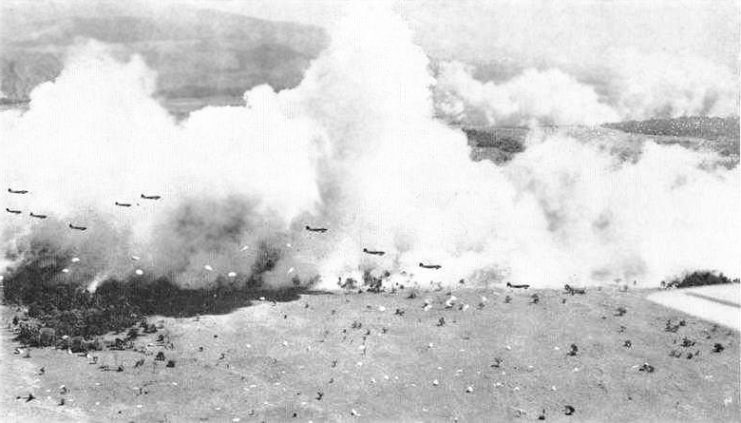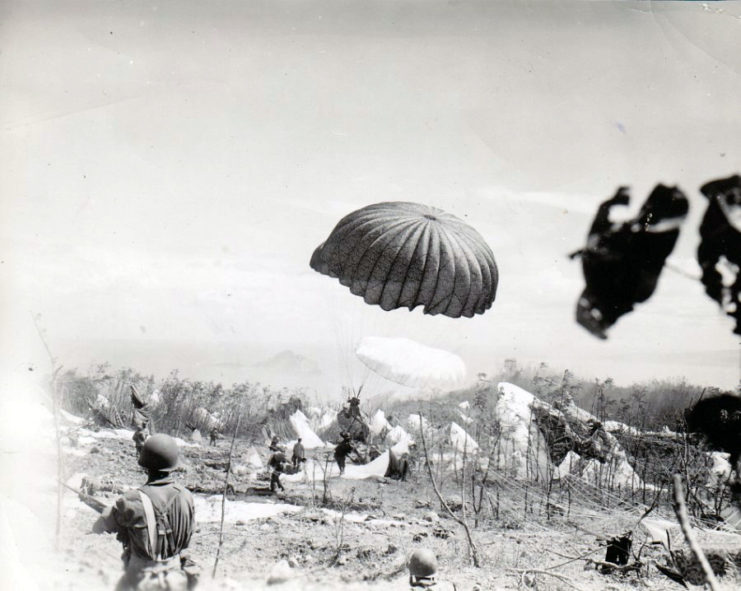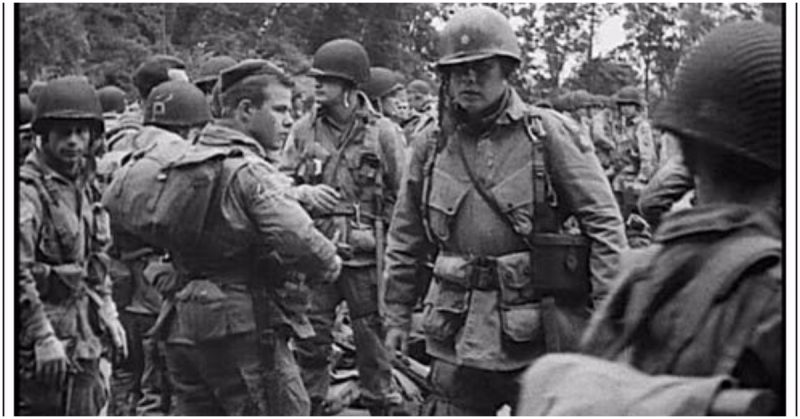On the night of November 7, 1942, American forces launched Operation Torch, the invasion of Axis-occupied North Africa. It was an operation that involved several experiments and innovations. One of them was the first ever American paratroop drop.
The Parachute Battalion
The troops used in the attack were the 2nd Battalion of the 503rd Parachute Infantry Regiment. It was a deceptive name, designed to make it seem that America had more paratroopers than it did. In reality, the 503rd contained only one battalion and was sometimes referred to as the 503rd Parachute Infantry Battalion. Colonel Edson D. Raff was in command.
Attempts to confuse the Axis with names went further. At the Torch landings, the 503rd were renamed as the 509th, still a regiment only one battalion strong.
The tricks were surprisingly successful. The Germans tortured a captured officer trying to discover where the 503rd were.
War Plan or Peace Plan?
The paratroopers had the task of capturing the La Sénia and Tafaraoui airfields near Oran. The Vichy French controlled the North African territory in the ostensibly free part of conquered France. The Vichy government collaborated with the Axis powers, but were the people resentful of the German invaders? No-one knew how the French would respond to the Allied invasion. Covert diplomacy had prepared some French officers to side with the invaders, but which side would the soldiers choose?
The paratroopers trained for two different plans – a war plan and a peace plan. If they encountered resistance, then they would follow the war plan and seize the airfields under cover of darkness. If they followed the peace plan, they would wait until the next day and land in daylight.
The troops waited at their base in Cornwall for a signal that it would be the war plan. None came. They would be getting their easy landing.
Or so they thought.

Weather Problems
At 2130, the paratroopers’ C-47 transport planes began taking off from St. Eval and Prelernack, at the southern tip of Britain. The men ate a late meal and then tried to sleep, a difficult task in the canvas seats lined up along the inside of the planes.
Almost immediately, they encountered a problem. Thick fog forced the formation of airplanes to split up, to avoid crashing into each other. It also made navigation difficult. Many planes were lost in the fog and darkness.
Three planes had to land in Spanish Morocco as they ran out of fuel. The Spanish, though neutral in the war, were friendly towards Nazi Germany. The soldiers who landed there were interned.
Another plane developed problems with its engine. It landed at British-held Gibraltar, on the tip of the Spanish Peninsula.
By dawn, only half a dozen planes were in the largest group approaching Africa.
Approaching the Airfields
The first plane to reach the airports arrived at Sénia and landed as planned.
The Americans did not receive the friendly welcome they had expected. The French soldiers at the airfield were not among those who had been won over ready for an Allied landing. They arrested the paratroopers.
The French then knew that the Americans were attacking. They leaped into action, ready to defend their bases against the invaders. As other planes approached the airfields, they were met with a hail of fire from antiaircraft guns and the weapons of French soldiers.
Sebkra
A new plan was needed, and fast. The planes had gone prepared for a one-way trip. They could not just turn around and head back. They needed somewhere to land.
Nor could the paratroopers jump from their planes and descend on the airfields. Without the cover of darkness to hide them, they would be sitting ducks as they fell through the air, dangling beneath their parachutes. The French would be able to pick them off as they fell, then rustle up the scattered survivors as they landed.
The planes swung away from their targets and headed toward Sebkra, a dried out lake bed west of Oran which could provide an improvised landing strip for the planes.

Friendly Fire
As the first planes landed, a column of armored vehicles on a nearby road caught sight of them. They opened fire, bombarding the soldiers as they emerged from their aircraft.
At that point, a formation of five planes approached the airfield. Onboard was Colonel Raff. Seeing his men under fire in the lake bed below, he quickly decided on another change of plan.
At Raff’s command, the five planes changed course. He and the paratroopers jumped, making a relatively safe daylight landing away from the fighting and the enemy. Raff gathered his forces, five planes worth of troops. They crept across the desert, sneaking up on the armored column.
They had a big surprise. As they approached the armored vehicles, they spotted the big white stars painted on their sides. They were American military. In the confusion of the landings, friendly forces had been fighting each other.
Fortunately, no harm had been done in the brief engagement. Raff gathered his men and prepared for the last part of the action.
A Forced March
The assembled paratroopers set off on a march toward their airfield targets.
It was not a long trek compared with many undertaken during the war, but it was difficult. One of the soldiers described it as the toughest the battalion ever made. They were wearing winter clothing and heavy underwear. Necessary for surviving the cold African nights, but a huge hindrance as they marched through the heat of the desert day. The long flight from England had robbed many of them of sleep. There was also the physical and emotional tension of the landings into a combat zone. Parts of the Sebkra lake bed had dried out just enough to form a thick, clinging layer of mud through which they had to wade.
Despite it all, they completed their mission. By the next day, American reserves were resting at Tarafaouri airfield.
The first US paratroop landing had been a messy business, but it was a valuable experience, and ultimately it was a success.
